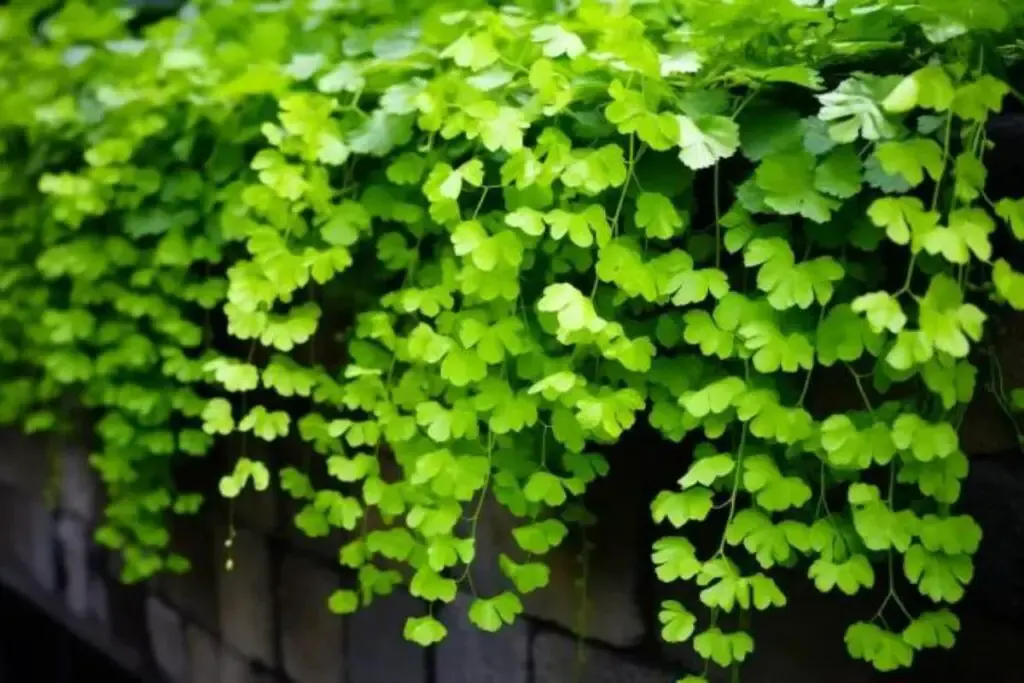Ferns are some of nature’s most ancient and fascinating plants, having thrived on Earth for millions of years.
They bring a unique, prehistoric charm to any garden or indoor space. If you’re looking to add a touch of lush greenery to your home, ferns are an excellent choice. Their versatility and relatively easy care make them popular among both novice and experienced gardeners.
Let’s delve into the world of ferns and explore how to grow and care for these beautiful plants.
Benefits of Growing Ferns

1. Air Purification
Ferns are not just about beauty; they also play a crucial role in purifying the air. Certain varieties are known for their ability to absorb toxins and improve indoor air quality, making them a great choice for homes and offices.
2. Low Light Tolerance
Many fern varieties thrive in low-light conditions, making them ideal for spaces that don’t receive a lot of natural sunlight. This characteristic makes them perfect for adding a touch of greenery to dimmer corners of your home or office.
3. Humidity Loving
Ferns love humidity, which makes them particularly well-suited for bathrooms and kitchens. Their preference for moist environments helps in maintaining healthy indoor humidity levels, which can be beneficial for both the plants and the occupants of the space.
My Favorite Fern Varieties
Ferns are as diverse as they are beautiful, each variety bringing its own unique charm to the garden. From the delicate fronds of the Maidenhair to the robust leaves of the Boston fern, there’s a fern for every type of gardener and garden.
Here are three of my favorite fern varieties that not only add beauty to any space but also cater to different care preferences and environments.
1. Boston Fern (Nephrolepis exaltata)

This is perhaps one of the most popular and easy-to-care-for ferns. Boston Ferns are known for their lush, arching fronds and forgiving nature. They thrive in bright, indirect light and consistent moisture, making them perfect for indoor gardeners. Its air-purifying qualities are a bonus!
2. Maidenhair Fern (Adiantum)

Delicate and elegant, the Maidenhair Fern features small, fan-shaped leaf segments on slender, black stems. It prefers a bit more care, loving high humidity and consistent moisture without being waterlogged. This fern is ideal for those willing to give a little extra attention for a stunning display.
3. Staghorn Fern (Platycerium)

Unique in its growth habit, the Staghorn Fern is an epiphytic plant, meaning it can grow on other surfaces like tree trunks or hanging boards. Its antler-shaped fronds make it a striking choice for a vertical garden or as a hanging plant.
Staghorn Ferns do well in bright, indirect light and require less frequent watering, making them a fascinating choice for busy or forgetful gardeners.
Fern Care
Caring for ferns can be a joyful and rewarding experience, especially when you see those lush fronds thriving under your care. While each fern variety has its own specific needs, there are some general care guidelines that apply to most ferns.
By following these simple tips, you can ensure your ferns stay healthy and vibrant, whether they’re gracing your garden or adding a touch of green to your indoor spaces.
Planting

Planting ferns can be a simple and enjoyable process. Whether you’re adding them to your garden or potting them for indoor enjoyment, here are five key steps to ensure your ferns get the best start:
- Choose a shaded spot outdoors or an area with indirect light indoors.
- Use rich, well-draining soil, enriched with compost for outdoor ferns or a quality potting mix for indoors.
- Set the fern’s crown just above the soil level to avoid rot.
- Soak the soil around the roots to settle them in and remove air pockets.
- Apply mulch for outdoor ferns and place indoor ferns away from drafts.
Light
Most ferns prefer indirect, filtered light. Direct sunlight can be too harsh for their delicate fronds, causing them to scorch or fade. A north-facing window or a shaded spot in your garden is typically ideal. If you’re growing ferns indoors and don’t have a lot of natural light, consider using grow lights to provide the necessary illumination.
Soil
Ferns are quite particular about their soil; they thrive in rich, well-draining, and slightly acidic to neutral pH soil. Whether you’re planting in your garden or a container, incorporating organic matter like compost or peat moss can greatly improve soil structure and fertility.
This creates the perfect environment for ferns to spread their roots and flourish, showcasing their lush greenery.
Water
Ferns love moisture, but it’s crucial to find a balance. Overwatering can lead to root rot, while under-watering can cause the fronds to dry out and turn brown. Aim to keep the soil consistently moist but not soggy.
If you’re unsure, a simple finger test—inserting your finger about an inch into the soil—can help you determine whether it’s time to water.
Temperature and Humidity
Ferns are lovers of cooler temperatures and high humidity, mimicking their natural forest floor habitats. They generally prefer temperatures between 60-75°F (15-24°C) and flourish in humid conditions.
To recreate this environment, especially indoors, consider using a humidifier or placing your ferns in naturally humid areas like bathrooms, ensuring they feel right at home.
Fertilizer
Ferns benefit from occasional fertilization, but they don’t require heavy feeding. A balanced, water-soluble fertilizer applied sparingly during the growing season can enhance their growth and vitality. Just remember, a little goes a long way with these naturally low-maintenance beauties!
Pruning
Pruning is an essential part of fern care, helping to maintain their shape and encourage healthy growth. It’s a simple process that can significantly enhance the appearance and vitality of your ferns. Here are three key steps to effective fern pruning:
- Remove Dead Fronds: Regularly trim away any dead or brown fronds to keep the plant looking fresh and to encourage new growth.
- Shape As Needed: Lightly prune to shape your ferns and control their size, especially if they are growing more in one direction.
- Clean Cuts: Use sharp, clean scissors or pruning shears for a clean cut that will heal quickly and prevent damage to the plant.
Propagating
Propagating ferns is an exciting way to expand your collection and share these enchanting plants with others. It’s a straightforward process that brings the joy of gardening to a new level. Here are two common methods for fern propagation:
- Division: This method involves gently dividing a mature fern into smaller sections, each with a part of the root system. Replant these divisions in suitable soil to grow new ferns.
- Spores: Ferns can also be propagated from spores. Collect spore cases from the underside of mature fern fronds and sow them on moist peat or sterile potting mix, keeping them in a humid, indirect light environment until they germinate.
How to Grow Ferns From Seed
Growing ferns from seeds, or spores, is a delightful venture into plant propagation. This method is perfect for those who enjoy observing the gradual and fascinating development of these ancient plants. Here’s how to do it in four steps:
- Harvest Spores: Collect spores from the underside of a mature fern’s fronds, where they are stored in tiny, dust-like structures.
- Sow Spores: Spread the spores over moist, sterile potting mix in a shallow container, ensuring a light and even distribution.
- Maintain Humidity: Cover the container with clear plastic to create a humid environment, essential for spore germination.
- Provide Indirect Light and Warmth: Place in a spot with indirect sunlight and maintain a temperature of 65-70°F (18-21°C) for optimal growth.
Growing in Pots

Potted ferns add lush greenery to indoor and outdoor spaces. Here are three key steps for successful growth:
- Choose Well-Draining Pots: Ensure pots have drainage holes and are roomy enough for growth.
- Select Proper Soil: Use a well-draining potting mix, enriched with organic material for moisture retention.
- Place in Indirect Light: Keep ferns in areas with indirect sunlight, away from harsh elements or dry heat indoors.
Overwintering
Overwintering ferns is crucial to protect them from colder temperatures and ensure their survival and regrowth in spring. Here are three essential tips for overwintering your ferns:
- Move Indoors: For outdoor potted ferns, bring them inside to a cool, well-lit area before the first frost.
- Reduce Watering: During winter, cut back on watering, keeping the soil slightly moist but not wet.
- Maintain Humidity: Provide adequate humidity through occasional misting or using a humidifier, especially for indoor ferns.
Transplanting
Transplanting ferns can invigorate their growth and enhance their health, especially when they outgrow their current space. Here are four essential steps for successfully transplanting ferns:
- Choose the Right Time: Early spring or fall are the best times for transplanting, avoiding extreme heat or cold.
- Prepare the New Location: Select a spot with appropriate light and soil conditions, and prepare the soil with organic matter.
- Gently Uproot the Fern: Carefully dig around the fern, preserving as much of the root ball as possible, and lift it from its current location.
- Replant Promptly: Plant the fern in its new location at the same depth it was previously growing, and water it well to settle the soil around the roots.
Common Pests & Diseases
While ferns are generally hardy, they can occasionally fall prey to pests and diseases. Being aware and proactive can help keep your ferns healthy. Here are three common issues to watch out for:
- Aphids and Mealybugs: These small insects can sap the strength from ferns. Treat infestations with insecticidal soap or neem oil.
- Scale: These hard-shelled pests attach to fern fronds, causing yellowing and weakening. Remove them manually or treat with horticultural oil.
- Fungal Diseases: Overwatering can lead to root rot or fungal leaf spot. Ensure good air circulation and avoid overwatering to prevent these issues.
While growing and caring for ferns does require some attention to their specific needs, their unique beauty and the tranquility they bring to your space make it well worth the effort.
Keeping an eye out for common pests and diseases, and addressing any issues promptly, will help ensure your ferns remain vibrant and healthy. Embrace the journey of nurturing these ancient plants, and enjoy the lush, green serenity they add to your home or garden. Happy fern gardening!
